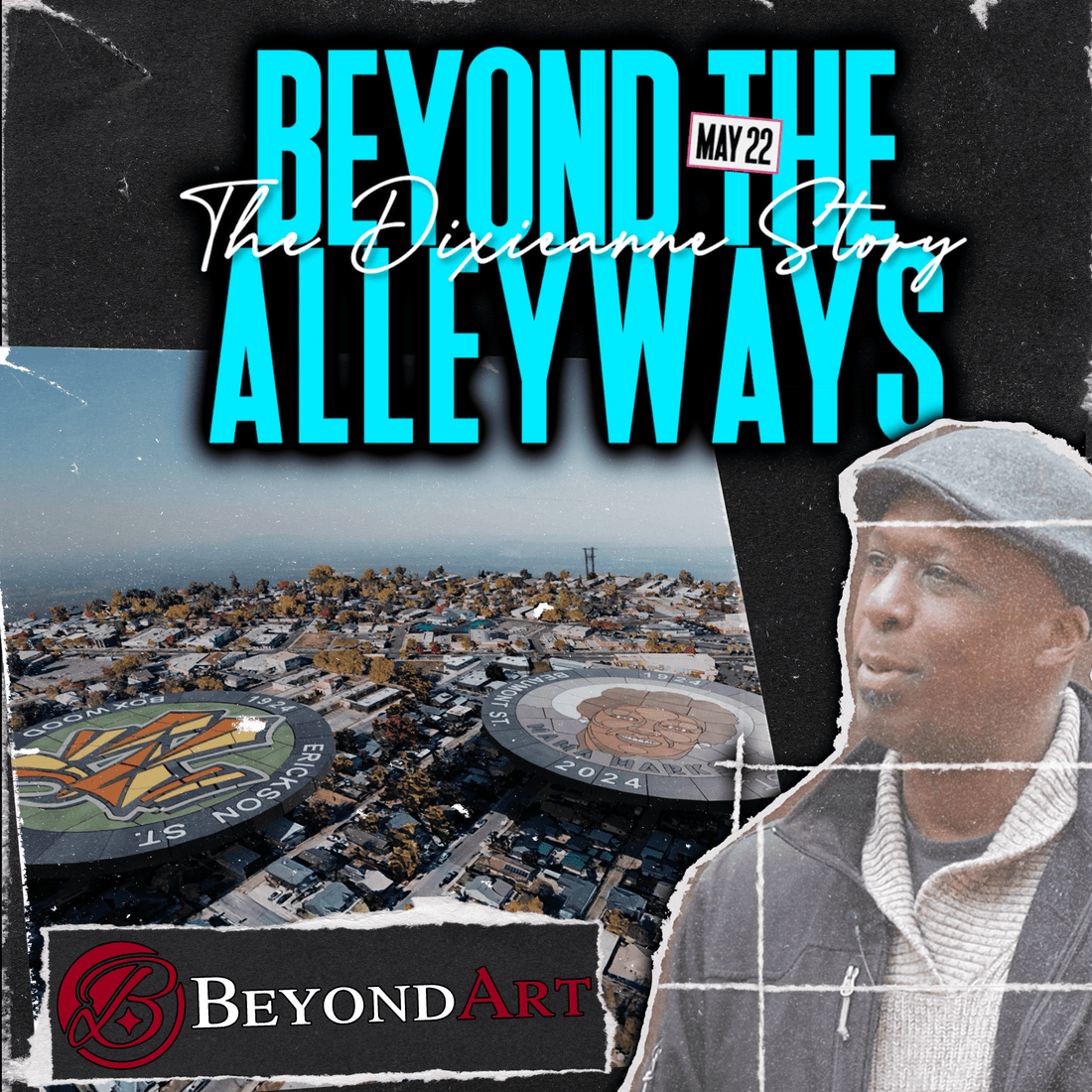
Art that Lasts and the Stories Behind "Beyond The Alleyways: The Dixieanne Story"
Share
When my dad and I go on long walks, all sorts of ideas start flowing, from new products we can make, schemes to annoy my mother, or just random sparks of creativity. Most of these ideas never see the light of day, so if you told me a year ago that our idea to make a documentary about a city 3000 miles away from us during my senior year of high school would be one of the few ideas that came to light, it wouldn’t take long before I called you crazy. Surprisingly, it actually happened.

The Birth of BeyondArt
The idea was simple: we have a custom paver design company called PAVERART, why don’t we extend into other art mediums and storytelling with a new venture called BeyondArt? It took a year to launch the website, but eventually BeyondArt came off the drawing board and became real, and our first project came to us faster than expected.
We were contacted by Sparky Harris, a principal planner of the City of Sacramento. He was spearheading an ambitious effort to revitalize ten rundown alleyways with permeable pavement and public art that would last a lifetime. Art that is built to last is exactly our strong suit, so we got to work collaborating with 10 Sacramento artists to set their vision into stone and went back and forth with many of them to make sure the designs we made kept the essence of their original design.

Uncovering the Story Behind Mama Marks
Collaborating with artists wasn’t new to us, but one design caught my eye: the Mama Marks design, created by Christine Shields. The design featured a beloved woman from the community that used to give out free food to children and anyone in need. We worked directly with Christine to make sure that her face would come out as best as possible with our limited selection of colors and eventually got to the point where she just looked great. As I got curious, I tried searching online to learn more about Mama Marks, but I found nothing. This sparked me to think that there had to be something deeper to this project and eventually led us to fly 3000 miles away from our home in New Jersey to California to figure out this story. One of the best outcomes of this documentary is that we were able to shed some light on a such a great story.

Battling The Elements & The Clock
I would like to say that everything was easy, but it was far from that. From the day we arrived in California to the day we left, it was raining nonstop. There was about 3 hours during the entire trip where you could see the sun. On top of that, most of our interviews were outside, including our most important interview with Sparky Harris. We were so disorganized during filming that Sparky’s microphone wasn’t on for the first couple minutes of his interview (a fact that I never told anyone until after we released the documentary).

Our makeshift filming setup to account for the rain.
By the end of the trip, we had recorded over 300 gigabytes of footage, and then my job was to string together a story and edit it all together.
One thing I am always running out of is time, and to edit together a full documentary with the amount of footage we got, I needed more time than anything. My main problem was that I was still in school during all of this, and school is a massive drain on my time. I combated this issue in the only way that I could think of: editing the documentary during school. I was very fortunate to be a part of my county’s career and technical institute, where half my school day was dedicated to learning programs like Adobe Photoshop, Premiere Pro, and After Effects. I already knew the software going into the program, so I had the freedom to work on my own projects, and Beyond The Alleyways became my biggest.
The Premiere
No matter what way you slice it, the premiere of our documentary was easily the best part of the whole project. Once I finished editing, I sent the final cut to Sparky and Issac Gonzalez, the person behind the community outreach of the project, and I am happy to say that they were blown away. Their feedback amounted to how we needed to get on a plane and fly right back to California for a screening of the documentary. In about 1 month, Issac was able to coordinate the event for the community, and we had a public screening with a panel discussion after with prominent community members and my dad.

The story of the entire project and the community around it was also covered in this CBS news segment, Turning Blight into Beauty
Looking Forward
Now that I have graduated high school, finished the documentary, and have joined PAVERART and BeyondArt full time, I can’t wait to get into it and create more special things like this. In the meantime, I am going to find the best stories to tell, meaningful art, and trying to make art accessible for everyone who wants it.

